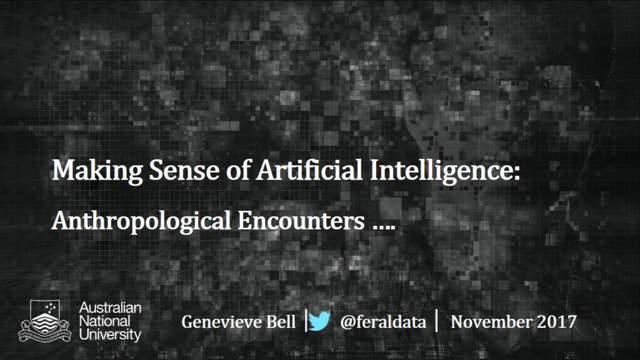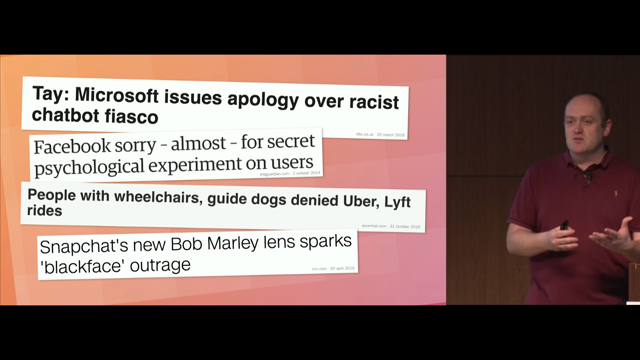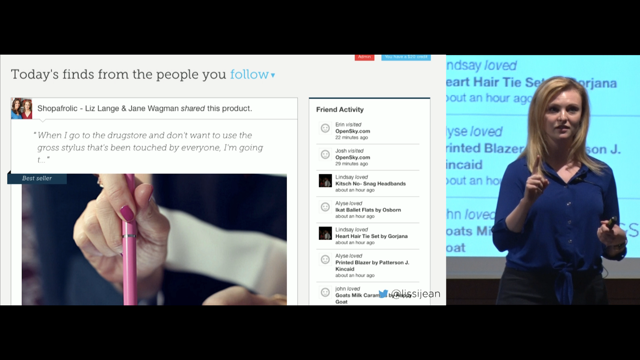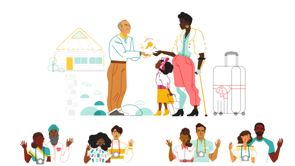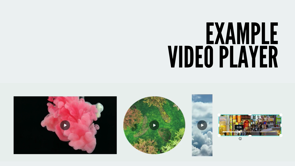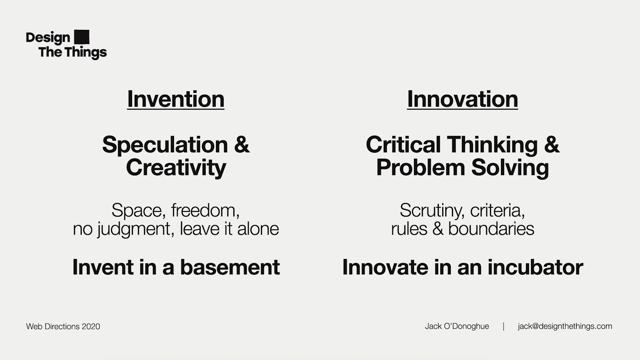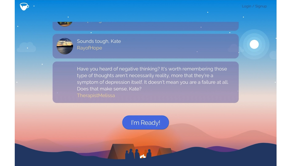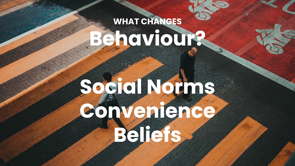It’s time to get better at disclosure: An evidence-based toolkit
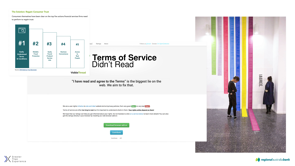
(upbeat music) - Hi everyone, from wherever you might be joining us in the world.
It's probably worth noting upfront that Rob and I are in different locations, that will be obvious in just a moment.
Rob recorded his presentation about a week and a half ago, I've been in bed sick for the last week.
We'd like to say in upfront, thank you to the entire team at Web Directions for doing everything that they've done to pull this together.
As you watch this, this will be the first time that we're seeing it too.
Alright, let's kick off.
My name's Nathan, I'm the CEO of Greater Than X, I'm one of the co-founders of Greater Than Learning. I've spent my career helping leaders and practitioners design their organisations for the qualities of trustworthiness.
I'm actually onto my third startup.
I spend a lot of time investing in startups at the moment, I'm investing in about 20 different startups a year. I live on the Gold Coast, which is where I am right now with my life partner, and best friend who happens to be the same person, my two and a half year old daughter, my little manic three-year-old dog, and a growing garden, which is very, very fun. Rob, over to you.
- Hi, I'm Rob, the chief digital officer at Regional Australia Bank.
We're a customer-owned bank with its head office in a country town in regional Australia, high up on a top of a thing called the great dividing range, where it actually snows in winter.
Yep, even in Australia.
But not today, today is boiling hot.
It's 30 degrees here, and I'm struggling a bit in this heat. So apologies for that.
Back to you, Nate.
- Okay.
Let's start at the beginning.
Why should we care about designing terms and conditions that people like, that they love? Why does it even matter? Well, if your only job was to read the privacy policies that you interact with on a yearly basis, you'd be fully employed for 76 days. How about this? I have read and agreed to the terms.
That statement is referred to as the biggest lie on the web. Another one, regulators right here in Australia, ACIC to be specific, have called out financial service disclosures, referring to them as financial sludge.
Even going so far as to suggesting that these types of disclosures enable poor conduct. So given this, it's probably unsurprising that consumers believe easier to understand terms and conditions are the number one thing that companies can do to restore trust.
Rob, when we first spoke, I remember we were sitting down at Shift Eatery in Surry Hills in Sydney.
We were talking about all of this stuff, it was pretty new to you at the time.
Do you recall your first reaction? Like what was it that motivated you to want to design disclosure experiences that were any different to that which we're used to today? - Yeah, I remember that coffee well.
My first introduction to oat milk, actually, as I recall. I also remember saying, my head was full of squashed flies, because what you spoke about was alien to me. At that time, the language, the terminology, it was challenging and a little bit confronting. And I really didn't know much about agreements. Remember I'm the tech guy, my job is about systems and platforms.
And I only really started getting involved in seeing agreements with CDR, the consumer data right. So here in Australia, that's what we call open banking. That's the ecosystem that open banking fits into. So if I talk about CDR, think open banking. So I started looking at how we communicate with our customers in terms of policies and agreements. Remember, we're a customer owned-bank, so we should be pretty good at this stuff.
But some of her agreements were awful.
We had some weird stuff in there, and I think it's because as you've said, no one reads these things.
So I felt I really needed to do something about that. Somehow, my head was full of squashed flies, but I was up for it.
And hey, I had an awesome subject matter expert buying me weird coffees.
- You know what? I often joke about wishing that everyone was as motivated about this stuff as Rob, and the reality is that they're not.
So lots of folks are sceptical, and that's good. Scepticism is a good place to start from.
But some write this stuff off completely before even giving it the chance.
So for those of you, let's introduce the evidence at a high level.
A lot of folks I interact with say things like, "No one cares.
"Look, they've agreed to add terms." And when you look at the surface level, the behavioural data in this case, this is true. Your behavioural event logs, they quantify that people have accepted your terms, even though they're incomprehensible, hidden away and not designed for those people, but designed to protect your organisation, but we'll push that to the side for just a moment. As you dive deeper, what becomes really clear is that this doesn't reflect how people feel at all. Research privacy, on data protection, on legal disclosures consistently surfaces a basic mental model. People feel powerless.
They don't believe they have any control or influence over the outcomes.
The terms that they're engaged in are zero sum, except or bugger off, that would probably be more appropriate framing. People have become as a result of this apathetic instead of actively engaging with, understanding and then economically rationalising the decision, which is basically what the law proposes people should do, and kind of do.
People bypass the agreements in their entirety. They don't read, they don't interact.
And this is really, as I said before, the behavioural manifestation of that apathy, this feeling of powerlessness.
And it's a simple reality of the modern world. I mean, who has time to read 33,000 words of terms and conditions? We refer to this phenomenon as the agreement bypass bias, ABB for short, double B.
This is where folks tick the box and move on without actively engaging with the content of the terms. And yes, this happens in financial services too. So Rob, over to you, why is it important for people to understand the agreement that they're getting into, and what are some ideas that you have for how to make this better? - Well right now, banks and many other businesses have a lot of data about people.
And CDR allows those people to put it to use in ways that directly benefit them.
But we've got to make sure they understand how it works. And while I love open banking, the danger is if we're not careful, we may not improve that situation.
I hear a lot about removing friction from processes, and one tap service delivery.
But by obsessing about removing all the friction, I think we might risk further obscuring the disclosure process to the point where people may have even less idea about what's going on. And there are important things going on here. When you get a loan, people tend to focus on the interest rate.
But what about the LVR? The DSR, the principal, the interest? The fees, the term? What happens if you default? What about security? All that stuff.
And it's pretty clear that many people really don't actually understand any of that when they commit to these things.
And I think they should.
So this is where responsible lending and better disclosure comes in.
And way, way back when I lived in the UK as a kid. Yes, really, I did.
I remember an RSPCA ad which said, "A dog is for life, not just for Christmas." So the idea being, this isn't a point in time thing. So let's apply that concept to lending, or indeed any contractual arrangement.
The responsibility doesn't begin and end at the moment someone ticks a box or agrees to some terms. So right now in the customer-owned banking world, and in our world, our values mean we must play strong emphasis on ensuring customers have the best products and services we can give them. That's our job.
So there's a problem, Nate.
How can regional Australia bank be true to ourselves and design experiences that recognise and accommodate all those values in a disclosure experience? - Well, that's a bloody good question, mate. How can we overcome the status quo and design terms that people love? Our answer at Greater Than X is the better disclosure toolkit.
It's a systematic approach to designing contracts and legal disclosures that are understandable and enjoyable to interact with.
The toolkit consists of metrics, research methods, specific ways of working and collaboration practises, an evidence kit, and a central artefact.
The better disclosure canvas.
The better disclosure canvas is a visual tool that guides cross-functional teams through the better disclosure design process step-by-step. When we first developed it, off the back of the Hayne Royal Banking Commission here in Australia, there was a specific, better disclosure recommendation.
It was primarily used in co-located workshops. It was printed out AO.
Folks would literally get around it, work through little scribbles, sticky notes, and all that type of stuff that we used to do that feels somewhat unfamiliar today.
Rob, I can recall the first time that we used this canvas out at the regional Australia Bank offices in Armadale. It was printed out, AO, literally.
We had two of them, in fact, stuck up on the wall behind you guys.
And since then we've been using it together virtually in mural.
Can you talk a little bit about the journey with this particular tool, from your perspective? - Those workshops were our first exposure to this technique and were quite a revelation. It was really helpful to have the canvas as a focal point to kind of prompt us, to make us do all the work, but keep us inside the rails.
I mentioned terminology earlier, remember that? Well, that was something we needed to get to grips with immediately, delay the core action, diversify the form factor, layering. I didn't know what any of that meant.
And I think looking back now, I think I underestimated the barrier that unfamiliar terminology could impose, especially with people who who've been kind of doing conventional agreements all their life.
So the canvas is really important, because it introduces this common language and kind of galvanises everyone around it.
Interestingly, one of the elements of the canvas down the bottom there is, give people a receipt. We didn't know what that meant at the time, but when we came to designing the CDR solution here in Australia and the customer experience guidelines and rules, we're very prescriptive about this.
They said we needed a receipt.
And it was like, ping! It all made sense, it was great.
So thank you, Nathan.
- Yes, I remember this moment well.
I actually thought, "Holy crap, "have you ever seen a bunch of people so happy "to be designing a contract?" And I don't think I have, but I hope to see more. - I want to talk a bit about the ways we actually worked here, how this was approached internally. Member-focused focused metrics that we use in our organisation.
And again, I think I'm gonna to lean on CDR as the example here.
So when we first started scoping our CDL project, we had a line item in the budget, in the project doco that said "Development of CDL policy," and it had a bit of a number against it.
So this is a piece of disclosure, remember? But our governance people query this, and I guess quite rightly he said, "Well, we do policies. "That's our business, we'll get some text and make sure "it protects the organisation.
"That's our job." Whereas Greater Than X were telling us, "Sure, you need to understand all the rules. "Of course all the compliance objectives, "but we also need to pull together a team of designers, "creatives, UX people, copywriters.
"And then when we've drafted this thing, "you can't publish it.
"We need to test comprehension and time to comprehension "and a propensity to share." So calling that, in our world, calling that a policy was a real understatement, and actually a bit of a hindrance because we associated it with something completely different.
- The specific practises, the ways of working, the tools and approaches, they're all integral to better disclosure.
Better disclosure doesn't work without these moving parts. But one of the biggest barriers that our toolkit aims to assist in overcoming is incentives misalignment. As a for instance, if you're a designer, ask yourself how many times your metrics and your incentives have been directly aligned to one of the lawyers that you've been working with.
Seriously, ask yourself the question.
The answer is never, it doesn't happen.
The metrics are misaligned. The incentives are misaligned.
Most organisations experience a heck of a lot of friction, because different functions within that same organisation are optimising for different outcomes.
We solve this problem, at least in part in a better disclosure context, not just by making the whole process more collaborative and transdisciplinary, but by focusing the entire process on customer-outcome focus metrics.
We focus on the customer first, not the business. And this could be likened to the agile manifestos working software over documentation principle. Like it's not a zero sum game, it's not this or that. It's customer outcomes over business ones.
We place priority on the customer.
And as you can see, from this preliminary study, in a very complex consumer contracting scenario, the uplift we see in these key outcome areas is significant. All right, so that's a little theory done.
Let's make it real for everyone.
Rob, can you talk about the CDR, the consumer data right policy process, output, some market observations, and lessons learned real quick? - Sure.
We should remember this thing didn't exist before. We were the first accredited data recipient in Australia. So we couldn't copy anyone else's work.
And in some ways that probably helped.
We had to be creative and decide what to do. And we needed something to guide us, and the canvas did that.
It kept us on track.
So we distilled hundreds of pages quite literally of regulatory rules and privacy legislation into basically a single page of content.
And we stressed and obsessed over every word. And then we kind of worked out, well, how do we present that most meaningfully? So the end result, it's far from perfect, but it's a huge step in the right direction for us. And it's given us confidence to do more of that ourselves. And when we finished, we did another thing, which was a little bit contentious and quite challenging for us as an organisation. We shared the work.
We published the wire frames, the end-to-end designs, all the legislation mapping work, the whole lot. And we put it all out there.
Remember, we're the first recipient, we just published it all to help others.
And we figured, well, that's going to help evolve this process and accelerate the evolution of this.
So people will improve on what we've done, and then we'll benefit from it too.
So we've since shared had more stuff, we actually even open sourced some software. Our CDR data recipient gateway, affectionately known as Dr. G.
So that bit of software helps people kind of plug their software applications into open banking. So it's another participation accelerator.
Oh, and we let people rate our CDR policy online. So since July we've been publishing that, and we've been tracking it, and look, we haven't had thousands of people rate this. It's still a policy after all, and most people don't find that too interesting, but we've had hundreds of people go through an eight-step online process.
And the average score is exactly 4.9 out of five, which is quite incredible, isn't it really? 4.9 out of five for a policy.
And I can tell you, it's an interesting thing asking people to rate your policies, and giving design assets and software away when you're a bank.
I mean, Nate and I could, and often do actually talk about moral analysis, ethics, frameworks, human behaviours, all day long.
But I guess just try and summarise this for you. All we're doing, what we're just trying to do is the right thing.
The thing that intrinsically, I think most people know all the time.
- What a beautiful way to frame it, doing the right thing.
Well, let's talk about how to make doing the right thing in your organisational context or in this specific context just a little bit easier.
Now I'm not gonna dive into varying theories of change right now, but when it comes to getting started, or in other words, changing the way that we behave, the evidence overwhelmingly supports the fact that motivation is unreliable.
It's not the thing to primarily focus on when attempting to do something new or something different. You've got to make the target behaviour, the change that you seek easier to do.
Using the Fogg behaviour model, as you can see here, behaviour equals motivation, plus ability, plus prompt or B equals MAP.
We can see that in order to cross the action line and do the target behaviour, it's best to decrease the difficulty of doing it. So here's one that you can do straight away. Implement that upfront time to read indicator that Rob mentioned.
The behavioural insights team in the UK conducted a great study last year.
They demonstrated that upfront time to read indicators increased the likelihood that people actively engaged with the disclosure experience by 105%.
In a matter of an hour or so, you can make progress that is quantifiable. Seriously, check your behavioural event logs before and after implementing this tiny tactic.
You'll see what I mean.
Rob, care to impart some knowledge on how to get started from your side of the proverbial? And timetable in this case.
'cause you were saying this a week and a half ago. - Well, we really didn't set out to do all of this stuff, but behaving in a trustworthy manner, it's actually kind of infectious, isn't it? Particularly to nerds and creatives, and that's what we are. So you may need to do this a little bit covertly initially to demonstrate the value, but then look, find a customer facing document an internal one or an external one.
Grab Nate's better disclosure canvas, check out agreement patent libraries online. There's a cracking one from the IACCM, all kinds of great ideas in there, and just start applying some of the techniques. Even if you just put an upfront reading time indicator, a little time graphic and a time value, you'll have made progress.
And then just iterate, seek the feedback, share, and don't be discouraged.
You'll get negative feedback, there will be naysayers, but plough on.
And something I've found really helpful myself is seeking out an equivalent at another organisation, a competitor's fine.
Someone else, a peer in another institution maybe, in our case at another bank and say, "Hey, I'm Rob.
"we're trying to improve our customer charter, "service catalogue, terms and conditions, whatever. "I had some ideas and I've sketched something out, "and I'd really love your opinion.
"What do you think of this? "Do you think we could work on this together?" And I found some really wonderful relationships in our business community just by taking that approach. So thoroughly recommend that one.
- All right.
Time to bring it to a close.
If you, like me and like Rob are sick of crappy terms, and you want to strive for an experience that your customers love, we've got a free, practical, micro-learning course on this very topic, A Primer to Better Disclosure.
Head to greaterthanlearning.online to get started. We'd both like to thank John, Rosemary and the entire organising team for pulling together a wonderful series of events.
Thanks for the opportunity.
If you wanna connect, if you wanna chat to Rob and I further, scan the QR code that you see in front of you right now and send us a LinkedIn invite.
Until then, bye-bye.
(upbeat music)


